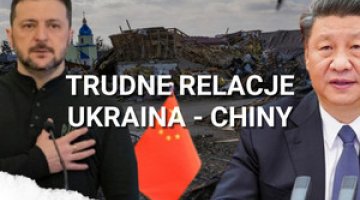Zelensky dismisses General Zaluzhnyi
On the evening of 8 February, Ukraine’s President Volodymyr Zelensky issued a decree dismissing General Valerii Zaluzhnyi from his post as Commander-in-Chief of the Ukrainian Armed Forces (UAF). In his place he appointed Colonel-General Oleksandr Syrskyi, hitherto commander of the Land Forces and the Khortytsia operational-strategic group (see Appendix).
Zelensky did not give a direct reason for General Zaluzhnyi’s dismissal, and did not directly hold him responsible for any failures or errors in command. In his statements over the past few days, the Ukrainian president has only mentioned that the army needs a new approach to the war with Russia, and requires changes, including to the personnel, in the top command positions. The dismissal of the commander-in-chief is the exclusive prerogative of the president, who under the constitution exercises the function of supreme commander of the armed forces in time of peace and war.
Commentary
- Zelensky’s decision was met with incomprehension and even criticism from a significant proportion of soldiers, volunteers working with the army, and the general public. The predominant accusation is that there was no comprehensive justification for this decision; the interpretation is that it was taken to remove an independent and highly authoritative general, and a potentially dangerous political competitor. Zaluzhnyi, hitherto a symbol of the fight by the army and the entire nation against the Russian invasion, enjoys a very high level of public trust, more than any of the country’s politicians – including Zelensky. The popularity of the former commander-in-chief, unlike that of the president, has not dropped, even after the failure of the summer 2023 offensive. According to a Kiev International Institute of Sociology poll from late last year, Zaluzhnyi is trusted by 88% of the public, while Zelensky is trusted by 62%.
- Zaluzhnyi’s resignation did not come as a surprise: reports about it have intensified over the past week, while irritation within the president’s entourage over the commander-in-chief’s actions had been growing for several months. Zaluzhnyi’s interview for the Economist on 1 November last year, in which he effectively admitted that the Ukrainian counteroffensive had failed, was received negatively. His criticism of the actions of the civilian authorities responsible for organising the facilities of the fighting army – including distancing himself from the first draft of the mobilisation bill in December, and more recently the allegations made in an article for CNN on 1 February about the partial monopolisation of the defence industry and the ineffective legislation leading to problems with arms production – also caused discontent.
- For more than a year, since the successful offensive operations in Kharkiv and Kherson oblasts in the autumn of 2022, President Zelensky has been systematically undermining the position of the commander-in-chief, thus violating the principle of unity of command and hierarchy in the UAF. He did this by contacting Zaluzhnyi’s subordinates – led by General Syrskyi – behind his back, giving them direct orders or making personnel changes without agreeing with the commander-in-chief (one example of this was the dismissal in November of the Special Operations Forces commander General Viktor Khorenko). The president’s actions led to a deterioration in his relationship with Zaluzhnyi, who for his part tried to avoid open conflict with the president’s office and entourage.
- Zelensky’s policy has resulted in the division of the army into competing factions, each of which enjoys a high degree of autonomy and has direct links to the Office of the President. The two largest operational-strategic groups, Taurida (covering the front from the Zaporizhzhia area to Avdiivka) and Khortytsia (from the border near Kupyansk to the area around Horlivka), were considered the most important of these. The former had hitherto been directly subordinate to Zaluzhnyi and is commanded by generals loyal to him; the latter, commanded by General Syrskyi, was reputed to be closer to the president than to the commander-in-chief. It remains unclear to what extent Zelensky will give Syrskyi a free hand in staffing matters and allow him to rebuild a hierarchical command structure, while limiting himself to exercising general supervision over the UAF and coordinating the state’s defence policy as a whole (such as issues of mobilisation, arranging and providing supplies, the arms industry, obtaining foreign aid, supervising the special services, and so on).
- Zaluzhnyi’s resignation comes at a difficult time in the war for Ukraine, when the army is defending itself across the whole front against overwhelming Russian forces; it is also in danger of losing Avdiivka, a key frontline position in the Donbas. At the same time, the UAF are facing an acute equipment and ammunition crisis, as well as a manpower shortage, which is assuming disastrous proportions in some infantry units. The timing of the commander-in-chief’s resignation is also bad because of the tensions created by the new mobilisation bill. However, it seems unlikely that the changes at the top of the army will cause any large-scale disruptions which could undermine its combat capability or contribute to a breakdown at the front.
- General Syrskyi is one of Ukraine’s most experienced commanders. He is not a media figure, and despite leading victorious offensive operations in the Kharkiv oblast in 2022, he lacks the authority and popularity in the army that General Zaluzhnyi enjoys. Within the army’s ranks, he is regarded as a commander who has no regard for the lives of soldiers, and is prepared to squander them for the sake of the task at hand. He has come in for particular criticism because of his chaotic command style and his poor preparation for the defence of Soledar and Bakhmut in late 2022 and early 2023. To a great extent General Syrskyi’s position as commander-in-chief will depend on whether he decides to remove generals considered to be Zaluzhnyi’s men from office and which colleagues he surrounds himself with. Any changes he makes among the commanders of the operational-strategic groups and subordinate operational groups will be crucial: these should be expected in the coming days.
Appendix. Oleksandr Syrskyi: a profile
He was born on 26 July 1965 in Novinki, in Russia’s Vladimir oblast. His parents are Russian and his father is a retired military officer. He began his military service in 1986 and graduated from the Moscow Military Command College. He has served in the Ukrainian army since Ukraine’s independence in 1991, and his career has involved a steady rise through the ranks, from platoon commander to deputy chief of the General Staff of the Ukrainian Armed Forces. He graduated with honours from the Academy of the Armed Forces of Ukraine (the operational-tactical course) in 1996 and from the Academy of National Defence of Ukraine (the operational-strategic course) in 2005.
Following the outbreak of armed conflict in eastern Ukraine in spring 2014 Syrskyi served in various roles in the command of the anti-terrorist operation in Donetsk and Lugansk oblasts. He took part in the command of operations near Debaltseve, and led the withdrawal of Ukrainian forces from that town in the winter of 2015. In 2016, he headed the Joint Operational Command of the Ukrainian Armed Forces, which coordinated operations in the Donbas; and in 2017 he was appointed commander of the ‘anti-terrorist operation in eastern Ukraine’. On 5 August 2019 Zelensky appointed him Commander of the Land Forces.
After the Russian invasion began, Syrskyi commanded a group of forces defending Kyiv. On 5 April 2022 he was awarded the title of Hero of Ukraine. In September that year, he successfully led a counter-offensive in the region around Kharkiv.





